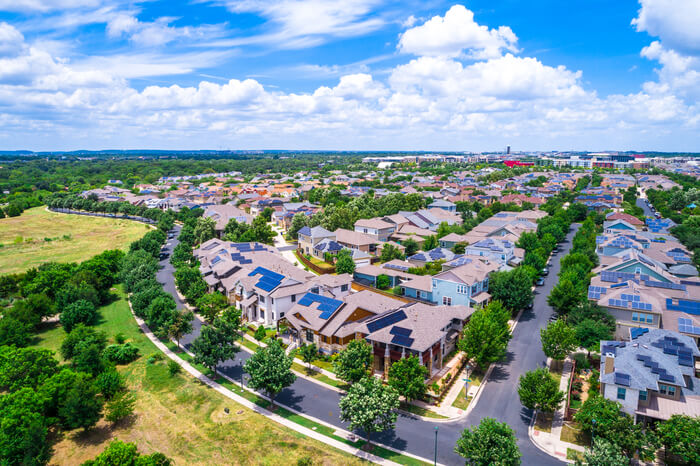Are you doing a solar project?
Modernize can pair you with three to four pros in your area, so you can compare options and save time and money.
When considering a solar investment in your home, two questions likely come to mind: How much will it cost and when will the project pay off? Thanks to the ever-decreasing cost of solar equipment and federal and local subsidies, you can see a return on your solar investment quicker than you think.
Some homeowners can expect their solar system to start paying for itself within seven years of installation. Although the exact payback period is contingent on numerous factors including the size of your system, the amount of energy you consume, local energy costs, your home’s sun exposure, incentives available in your area, net metering agreements, and other circumstances.
This can make the process of calculating the return on your solar investment confusing, but it doesn’t have to be.
Solar Equipment Costs
The best place to start when calculating your solar ROI is to estimate how much you’ll spend on panels. First, you’ll need to understand how much electricity you’re using already in your home. While this number might vary greatly depending on your home’s size and location, the average U.S. home consumes about 900 kilowatt-hours (kWh) per month — or nearly 11,000 kWh annually.
Solar systems can range from 1-15 kW (or even higher for commercial and larger developments), but the national average for residential homes is a 5-kW system. This average size system will produce about 6,000-8,000 kWh annually and cost around $12,500 after including installation costs and tax incentives.
The important thing to remember when selecting the size of your solar system is that you don’t need to reduce your non-solar energy down to zero. In fact, many homeowners still need to pull some energy off the grid to cover nighttime usage or low energy production days. Using a solar calculator can help you estimate how large a unit you’ll need to meet your household’s energy demands, as well as your system expenses.
Incentives and Tax Credits
A large percentage of the costs you’ll encounter with solar installation can be offset with the help of tax subsidies and incentives. The largest kickback homeowners are eligible for when embarking on a home solar investment is the investment tax credit (ITC). This federal program allows you to deduct over a quarter of your solar installation costs from your federal taxes.
The savings don’t end there. Most states also offer various incentives to help homeowners improve their solar ROI. These can come in the form of property tax credits, sales tax exemptions or cash rebates. Additionally, some states and municipalities offer net metering, which allows homeowners to sell their excess solar energy back to their local utility company — thus lowering monthly bills and shortening the payback period.
Find the Right Contractor for Your Solar Project
Whether you’re ready to begin your project now or need some expert advice, our network of contractors are here to help. With a few simple questions, we’ll find the best local professionals for you
Understanding what incentives your state offers will help you get a better picture of your ROI and how you can best capitalize on your investment.

Energy Consumption
Tax credits can help reduce the sticker price of your solar investment, but most incentives only offer homeowners one-time savings. The biggest impact to your solar ROI after the initial credits will come from your reduced utility spending over time.
To calculate this, look back at your past energy bills and figure out about how much you spend per year on electricity. Divide your system’s cost — after incentives — by the average cost per year, and you’ll have a rough estimate of the time it takes to earn back the investment you made on your system.
What It Means For Your Wallet
At first glance, making a solar investment in your home might seem like more risk than reward due to the large upfront cost. However, with incentives, rebates, and utility savings, your investment can start paying for itself quicker than you’d think. And, thanks to monthly utility savings, your solar investment will continue to put money back in your pocket — bringing you benefits years longer than other home improvement projects.
Proper planning and an understanding of what to expect before jumping into a solar project can help you make the best decisions based on your needs and greatly improve your solar ROI.
Find the Right Contractor for Your Solar Project
Whether you’re ready to begin your project now or need some expert advice, our network of contractors are here to help. With a few simple questions, we’ll find the best local professionals for you
Reviews from Real Homeowners
Welcome to Homeowner Resources! We are the Modernize blog. Modernize pairs more than 3 million homeowners a year with pre-vetted contractors in their area. This blog started because we believe homeowners should know everything about their homes, from how their HVAC works to which front door colors they might love. On Homeowner Resources, you can find information on every part of your home, right down to how you can negotiate with contractors to get the best price. Here's more about the blog.
Need a contractor? Learn more about how Modernize finds the right pro for you.



